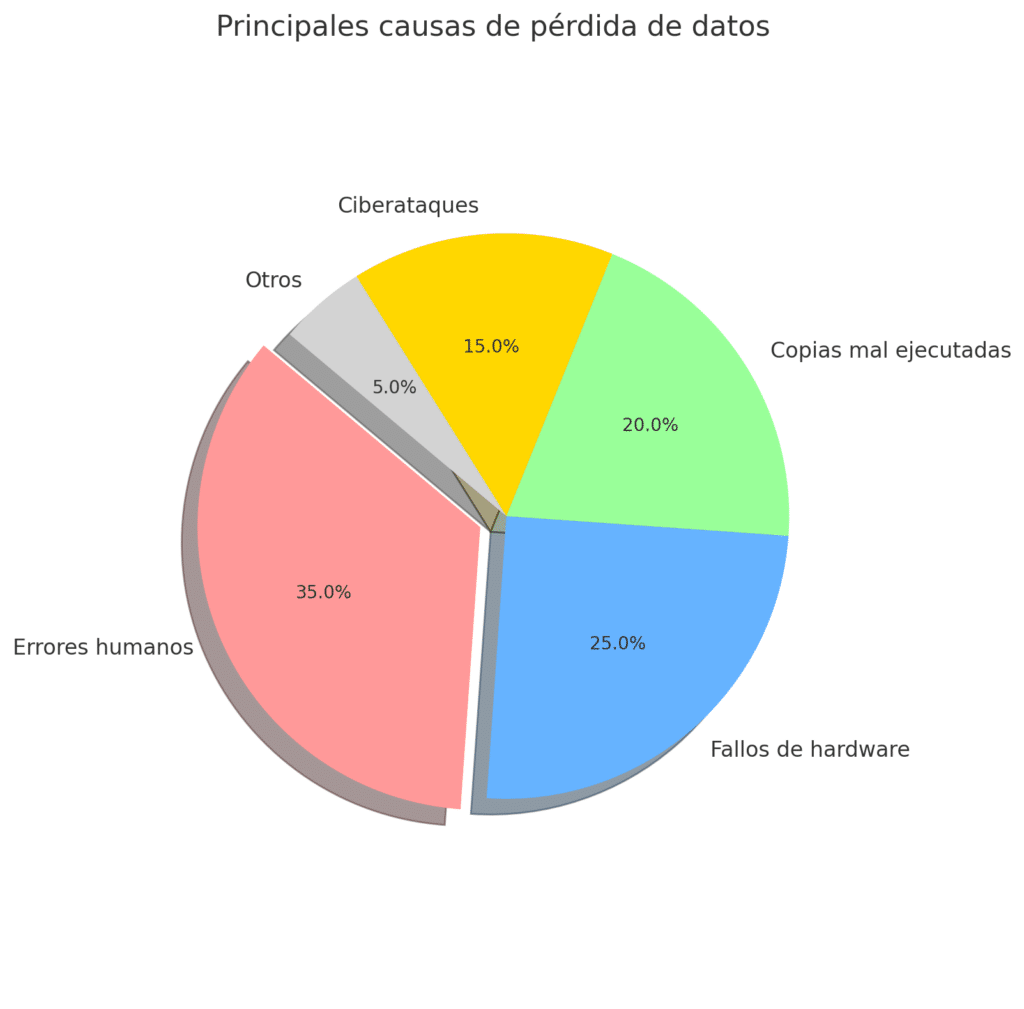87% of users claim to back up their data regularly, yet more than half have experienced data loss. The problem lies not in the intent but in the execution.
We live in a digital society where personal and professional data have become invaluable. Documents, photos, passwords, work files, or banking information: everything is stored on electronic devices that we use daily. Losing this information is not only frustrating, but in many cases, it can pose a serious problem for families, freelancers, small businesses, and large corporations.
Fortunately, awareness of the importance of backing up data has been growing. According to a survey by Western Digital conducted with more than 6,000 people in 10 countries, 87% of users claim to back up their data. However, despite this good habit, 63% have experienced data loss, some of which were unrecoverable. What is going wrong?
Why does data get lost despite backups?
The report reveals several reasons why users, despite believing they are protected, still suffer losses:
🔹 Human Error
The most common cause. Accidental deletions, overwriting important files, or even using cleaning software that removes data without the user’s explicit consent. Often, these actions go unnoticed until it is too late.
🔹 Hardware Failures
Hard drives that fail, corrupt USB drives, or storage systems with damaged sectors. In some cases, failures develop gradually without visible signs until the information becomes inaccessible.
🔹 Poorly Executed Backups
A poorly done backup is almost as useless as not having one at all. They are often stored on the same device that contains the original files, meaning a device failure also affects the backup. Sometimes, backups are done manually and are forgotten, leaving out recent information.
🔹 Cyberattacks and Ransomware
The rise of cyberattacks has led many people to lose access to their files. In some cases, attackers encrypt or delete data, also impacting backups if they are connected to the network.

The Solution: Backups Yes… But Done Right
Making a backup is important. Doing it correctly is essential. That’s why experts recommend applying the well-known 3-2-1 strategy, a standard in cybersecurity:
- 3 copies of each important file.
- 2 different storage media: for example, a hard drive and cloud storage.
- 1 external copy: stored outside the usual environment (another physical location or secure cloud).
This way, even if a physical disaster occurs (fire, theft, equipment failure) or a cyberattack happens, there will always be a safe, available copy.
How to Improve Our Backups?
- Automation: using automated systems prevents human error and ensures backups are updated regularly.
- Verification: merely copying data is not enough. Regularly check that the backup is accessible, readable, and current.
- Physical Separation: a copy on the same device is useless if that device fails.
- Secure Cloud Storage: many professional solutions offer encryption and remote access, as well as redundant copies in different data centers.
Companies are the Most Exposed
In the business realm, the consequences of losing data can be even more severe: from activity disruption to fines for non-compliance with data protection regulations. In sectors like education, health, or finance, losing critical information can lead to irreparable damage to an organization’s reputation or operations.
Conclusion: Backing Up is Just the First Step
The Western Digital survey highlights a contradiction: most users believe they are protected, but reality shows that data loss is more common than it should be. The solution involves not just making backups, but developing a solid, coherent, and secure strategy to protect our most valuable information.
Because in a world where digital is everything, losing our data is like losing a part of our life. And preventing it is, quite literally, in our hands.

